Edit, Download, and Sign the Revocable Transfer-on-Death Deed Instructions
Form
eSign
Add Annotation
Share Form
How do I fill this out?
Filling out the Revocable Transfer-on-Death Deed is straightforward. Begin by entering the owner information and the legal description of the property. After completing the form, ensure it is acknowledged by a notary public before recording it.
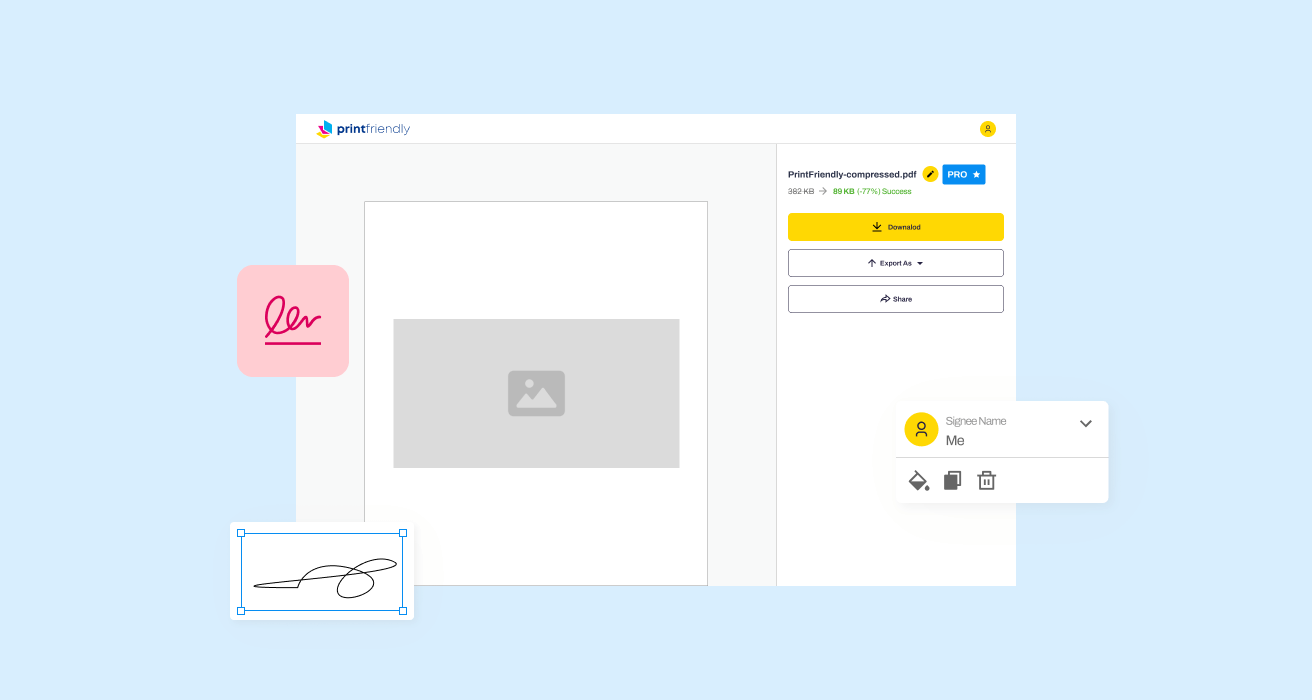
How to fill out the Revocable Transfer-on-Death Deed Instructions?
1
Obtain the Revocable Transfer-on-Death Deed form.
2
Fill in the required information, including owner and property details.
3
Designate primary and alternate beneficiaries if applicable.
4
Have the completed form acknowledged before a notary public.
5
Record the deed with the Office of the Recorder of Deeds.
Who needs the Revocable Transfer-on-Death Deed Instructions?
1
Property owners looking to transfer real estate upon death.
2
Individuals planning their estate to avoid probate.
3
People wanting to designate beneficiaries easily.
4
Those who need flexibility in transferring property.
5
Estate planners needing a simple transfer option.
How PrintFriendly Works
At PrintFriendly.com, you can edit, sign, share, and download the Revocable Transfer-on-Death Deed Instructions along with hundreds of thousands of other documents. Our platform helps you seamlessly edit PDFs and other documents online. You can edit our large library of pre-existing files and upload your own documents. Managing PDFs has never been easier.

Edit your Revocable Transfer-on-Death Deed Instructions online.
With PrintFriendly, you can easily edit your PDF by utilizing our intuitive editor. Make necessary adjustments by adding or removing text, and update any information as required. Your changes can be saved and downloaded for your records.

Add your legally-binding signature.
Signing your PDF on PrintFriendly is simple and convenient. Use our electronic signature feature to sign the document securely. Once signed, you can download the finalized version for your records.
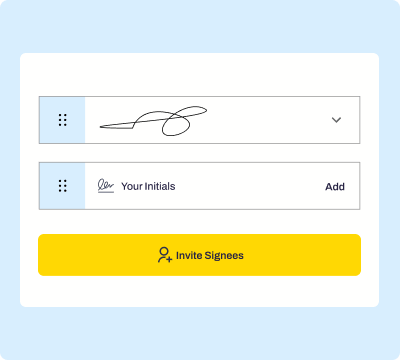
Share your form instantly.
Sharing your PDF is effortless with PrintFriendly's tools. You can share the file via email or direct links. This convenience ensures that your document is easily accessible to all necessary parties.
How do I edit the Revocable Transfer-on-Death Deed Instructions online?
With PrintFriendly, you can easily edit your PDF by utilizing our intuitive editor. Make necessary adjustments by adding or removing text, and update any information as required. Your changes can be saved and downloaded for your records.
1
Open the PDF file in PrintFriendly's editor.
2
Click on the text areas you want to edit.
3
Make your changes in real-time.
4
Review the document to ensure accuracy.
5
Download the updated PDF to save your edits.

What are the instructions for submitting this form?
To submit the Revocable Transfer-on-Death Deed, take the completed form to the Office of the Recorder of Deeds located at 1101 4th Street, SW, Washington, DC 20024. You may also submit via fax or email if provided by the office. Always check the latest submission methods and requirements on the official website before proceeding for any updates.
What are the important dates for this form in 2024 and 2025?
Important dates related to the Revocable Transfer-on-Death Deed for 2024 and 2025 include filing deadlines or annual updates that may be required by the Office of Tax and Revenue in Washington, DC. Keep an eye on any changes in legislation that could impact recording requirements. It's advisable to consult local officials for the most current regulations.

What is the purpose of this form?
The Revocable Transfer-on-Death Deed is designed to allow property owners to transfer their real estate assets to designated beneficiaries automatically upon their death. This form helps in simplifying the transfer process, thereby avoiding the lengthy and often costly probate process. Ultimately, it aids in estate planning by providing clarity and direction in how assets are to be managed posthumously.

Tell me about this form and its components and fields line-by-line.

- 1. Owner Information: Includes the name and mailing address of the property's owner.
- 2. Legal Description: Detailed account of the property including square, suffix, and lot number.
- 3. Primary Beneficiary: Information about the beneficiary who will receive the property.
- 4. Alternate Beneficiary: Optional section to designate an alternate beneficiary.
- 5. Signatures: Space for the owner or owners to sign and date the document.
What happens if I fail to submit this form?
Failure to submit the Revocable Transfer-on-Death Deed may lead to complications in the property transfer process after death. The property may be subject to probate, resulting in additional time and costs. It is essential to ensure the form is recorded before the owner's death for it to be effective.
- Probate Complications: Properly recorded deeds eliminate the need for probate, whereas unrecorded deeds could complicate estate distribution.
- Beneficiary Confusion: Without a recorded deed, beneficiaries may be uncertain about their entitlements.
- Legal Challenges: Unrecorded deeds may lead to disputes or challenges from potential heirs or creditors.
How do I know when to use this form?

- 1. Estate Planning: For individuals planning their estate to ensure a smooth transfer of their assets.
- 2. Assets Management: When wanting to manage how your assets will be distributed after your death.
- 3. Real Estate Transactions: To facilitate a clear and uncomplicated transfer of real estate.
Frequently Asked Questions
What is a Transfer on Death (TOD) deed?
A TOD deed allows property owners to transfer their property to designated beneficiaries upon their passing.
How do I create a TOD deed?
Complete the provided form and have it acknowledged by a notary before recording.
Can I revoke the TOD deed after creating it?
Yes, you can revoke it by recording a new deed or by following specific revocation procedures.
Do beneficiaries need to be informed about the TOD deed?
While not required, it is advisable to inform them to prevent future complications.
What do I need to include in the legal description?
The legal description should include details like square, suffix, and lot number.
Is it necessary to include a primary and alternate beneficiary?
While not strictly necessary, it’s recommended to avoid complications.
Can I modify the form after it’s completed?
Yes, you can modify it before it's recorded.
What happens if I don’t submit the deed before my death?
If not submitted, the deed will not take effect and probate may be necessary.
Where do I submit the completed deed?
Submit to the Office of the Recorder of Deeds.
Is professional help recommended?
Yes, consulting with a lawyer can clarify any complexities regarding the deed.
Related Documents - TOD Deed Guide
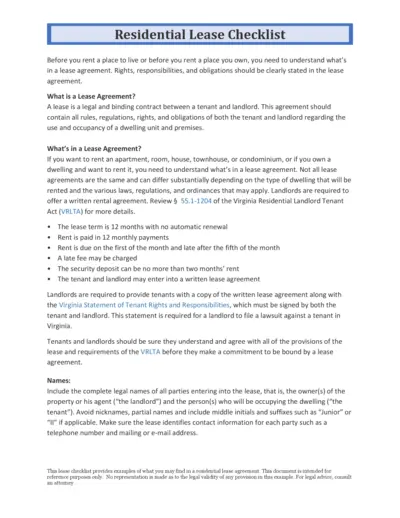
Residential Lease Agreement Checklist for Tenants and Landlords
This document provides a detailed checklist of what both tenants and landlords need to know and include in a residential lease agreement. It covers key elements such as lease terms, rent payment schedules, and maintenance responsibilities. Use this guide to ensure all rights and obligations are clearly outlined in your lease agreement.
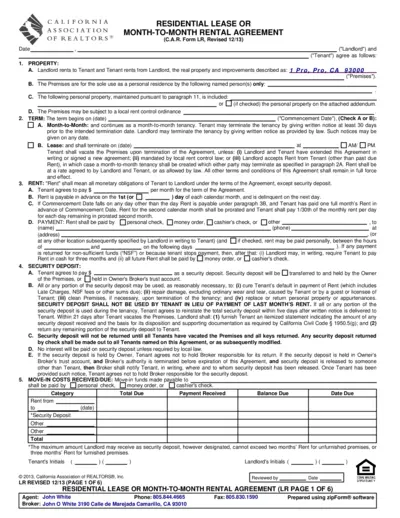
Residential Lease or Month-to-Month Rental Agreement
This file contains a comprehensive residential lease or month-to-month rental agreement used in California. It provides details on terms, obligations, and conditions for both landlords and tenants. Perfect for those seeking a standardized rental agreement form.
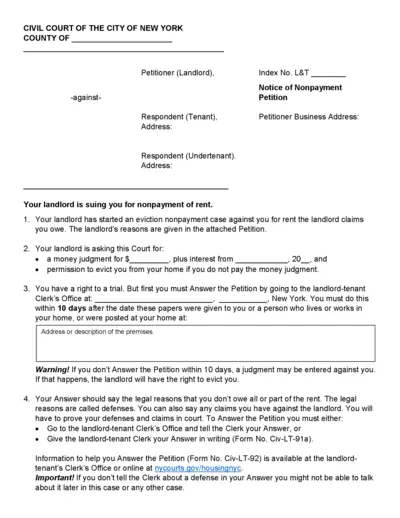
Civil Court of the City of New York Nonpayment Petition
This document is a Notice of Nonpayment Petition issued by the Civil Court of the City of New York. It details the actions that a landlord can take against a tenant for nonpayment of rent. It includes instructions on how the tenant can respond and their rights.
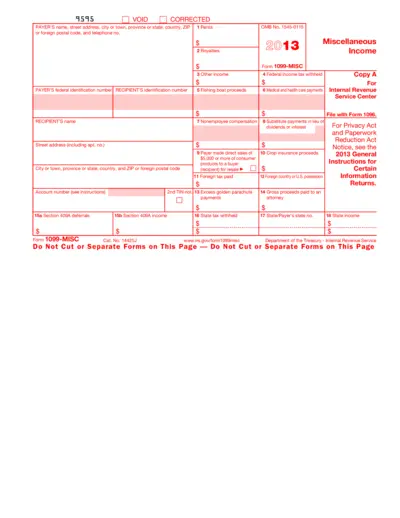
Form 1099-MISC: Miscellaneous Income for 2013
This file is a 2013 version of the IRS Form 1099-MISC used to report miscellaneous income. It includes fields for reporting various types of payments made to individuals or entities. The form is typically filed by payers to report income paid to recipients.
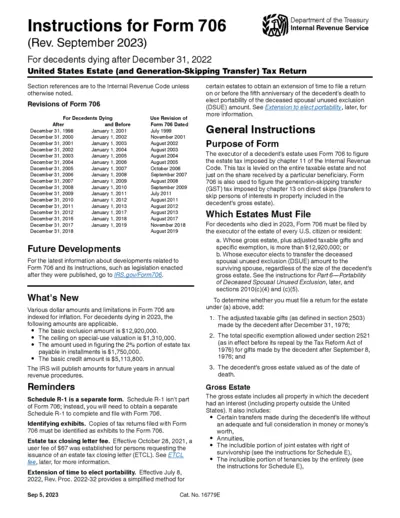
Instructions for Form 706 (Rev. September 2023)
This document provides detailed instructions for completing Form 706, the United States Estate (and Generation-Skipping Transfer) Tax Return for decedents dying after December 31, 2022. It includes information on revisions, general instructions, and specific filing requirements. The instructions also cover important updates and reminders related to the form.
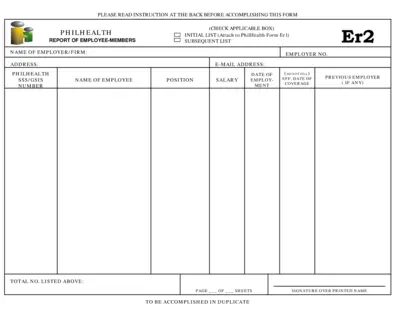
PhilHealth Report of Employee-Members Form Instructions
This file provides instructions for employers on how to fill out and submit the PhilHealth Report of Employee-Members form. It is essential for employers to report new hires to PhilHealth to ensure proper coverage. Detailed instructions and requirements are included.
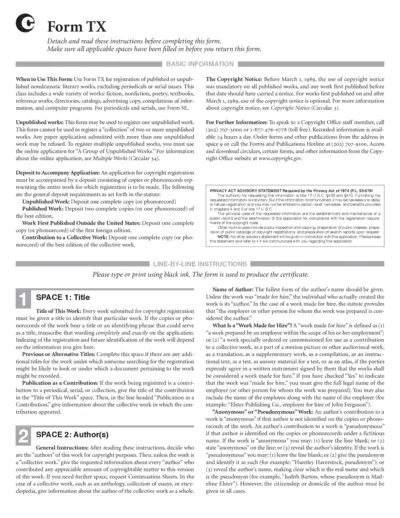
Copyright Registration Form TX Instructions
This form is used for the registration of nondramatic literary works, such as fiction, nonfiction, poetry, textbooks, and computer programs. It provides detailed information on how to complete the form, including what information is required for each section and how to submit the application. Use it to ensure your work is properly registered for copyright protection.
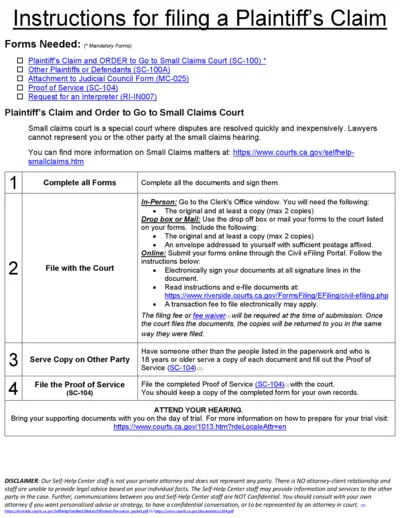
Plaintiff's Claim and Instructions for Small Claims Court
This file provides instructions and necessary forms for filing a Plaintiff's Claim in Small Claims Court. It includes details on filling out, submitting, and serving the forms. Ensure to follow the steps carefully to protect your rights.
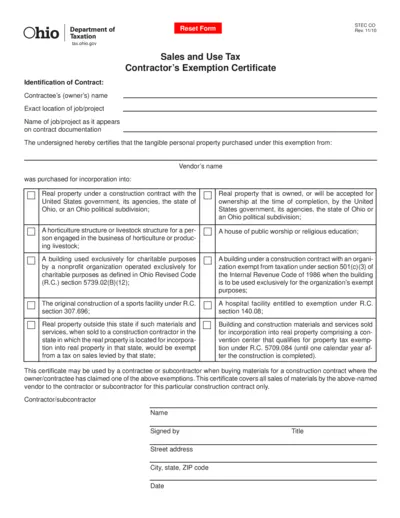
Ohio Sales and Use Tax Contractor's Exemption Certificate
This document is the Ohio Sales and Use Tax Contractor's Exemption Certificate. Contractors use this form to claim exemptions on certain taxable goods for specified exempt uses. It's crucial for contractors working with tax-exempt entities or on tax-exempt projects.
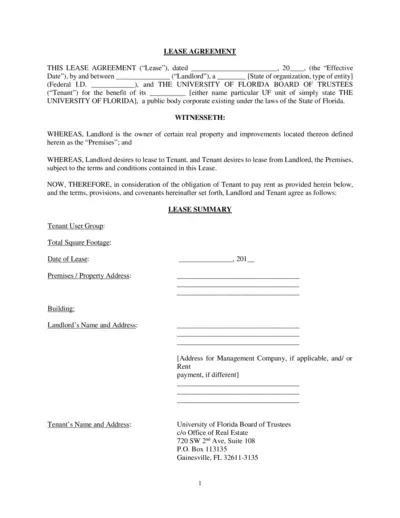
Lease Agreement for University of Florida Premises
This lease agreement file outlines the terms and conditions for renting a property owned by the Landlord to the University of Florida Board of Trustees. It covers key aspects such as lease term, rent details, improvements, and permitted use. Ideal for landlords and tenants involved in leasing agreements.
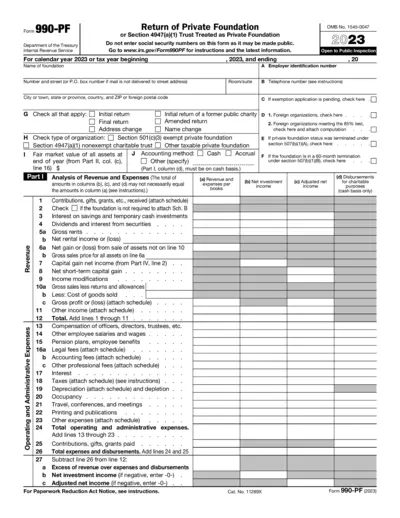
Return of Private Foundation Form 990-PF 2023
Form 990-PF is a return for private foundations required by the IRS. It includes information on revenue, expenses, and other financial details. Avoid entering social security numbers on this form.
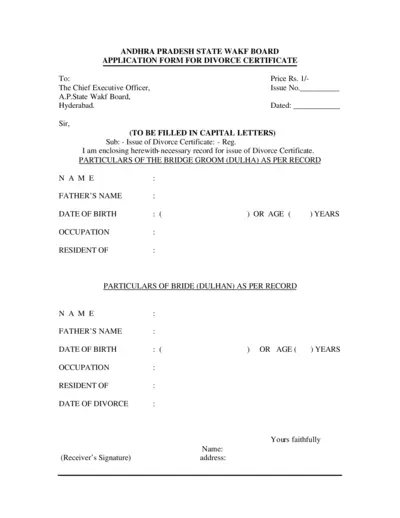
Application Form for Divorce Certificate - Andhra Pradesh State Wakf Board
This form is used to apply for a Divorce Certificate from the Andhra Pradesh State Wakf Board in Hyderabad. The form requires details of both bride and groom as per recorded information. It also includes fields for verification and office use only.